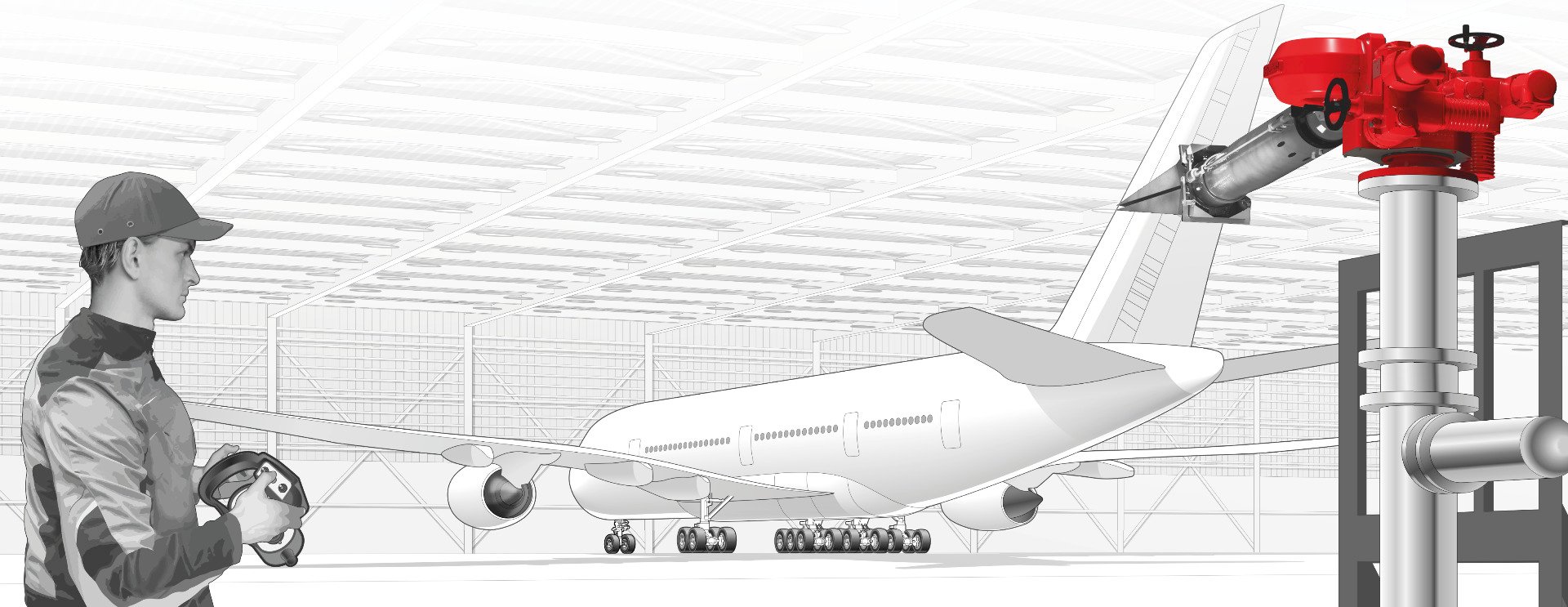Remote-controlled fire monitors for fixed firefighting systems
The requirement for automated firefighting is continuously increasing. Remote-controlled monitors, especially in combination with automated fire detection, allow a targeted but flexible firefighting operation in limited areas. The technical development in drive engineering, sensor technology and control technology offer some great future potential.
Automated firefighting systems are well known as sprinkler systems and also spray nozzles. But for several years automated firefighting systems with remote-controlled monitors are used for fire protection of tank farms, petroleum loading terminals, aircraft hangars, thermal power plants, production facilities, recycling plants, waste incineration plants
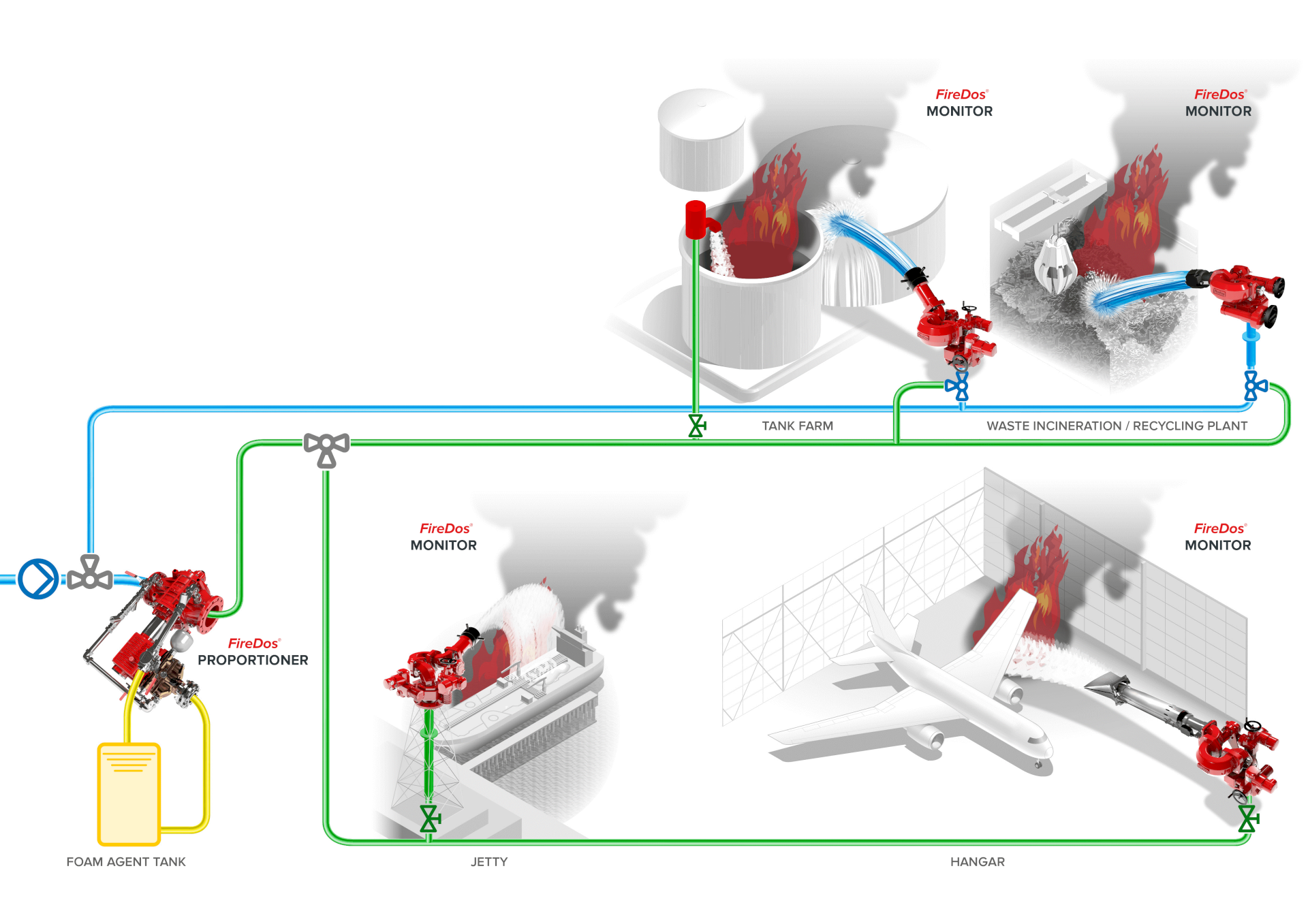
Advantages of firefighting systems with remote-controlled-monitors
-
Highly flexible
The wide range of monitors and the possibility to select from a variety of mountable nozzles provide flexibility and enhance performance to achieve effective fire protection for high-risk areas.
-
Targeted firefighting
Remote-controlled monitors enable targeted firefighting operations in confined spaces and can be used for extinguishing agents like water, low-expansion foam, and if required, even powder.
-
Effective fire protection, minimum firefighting personnel
The nozzles are fine-tuned to suit the type of extinguishing agent, allowing extended reach. Combined with suitable fire detection and control, effective fire protection can be guaranteed while requiring a minimum number of firefighting personnel.
-
Connection with automatic fire detection systems
To fully utilize the range of potential offered by remote-controlled monitors for firefighting, introducing a programmable (PLC) control system with state of the art communication facilities is mandatory. This allows the connection with automatic fire detection systems and fire alarm control panels also for very large and complex facilities. The response times are as fast as known from present automatic firefighting systems.
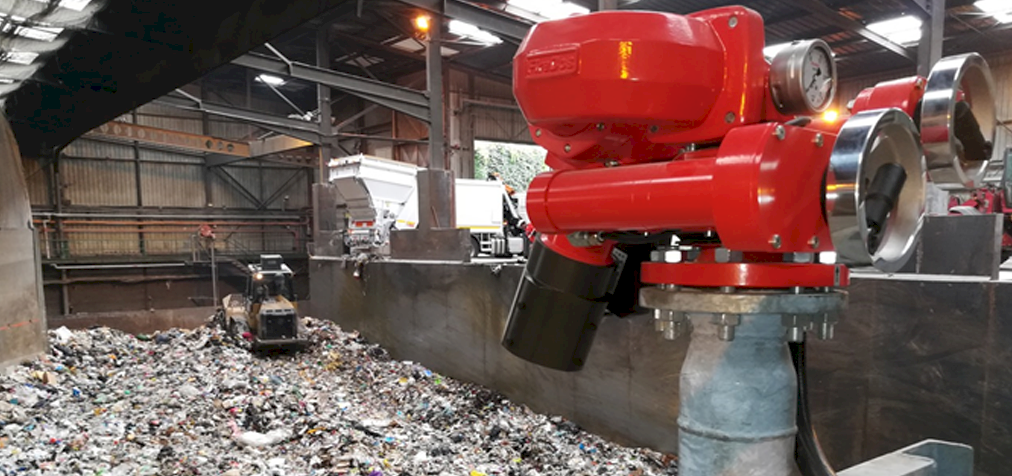
FireDos monitor in a recycling plant.
Requirements to remote-controlled monitors
When using remote-controlled monitors in automated firefighting systems, this requires a consideration of some function-relevant parameters with regard to the design and construction of the monitors.
Zero-clearance bearings
Repetition accuracy, or a return to the exact start point is essential for remote control monitors, otherwise constant recalibration is necessary. In order to achieve the requirements of repetition accuracy for pre-programmed extinguishing operations, zero-clearance bearings and gears are necessary to effectively prevent any tilting of the pivot mounting.
Reduction of the repulsion
The backward forces generated by firing a mass, such as a water jet, can lead to high equipment stresses and power consumption. A design aimed at reducing the repellent forces and decreasing the power needed to swivel the monitor, such as the optimized FireDos octagonal 'Oval Flat Design' is essential.
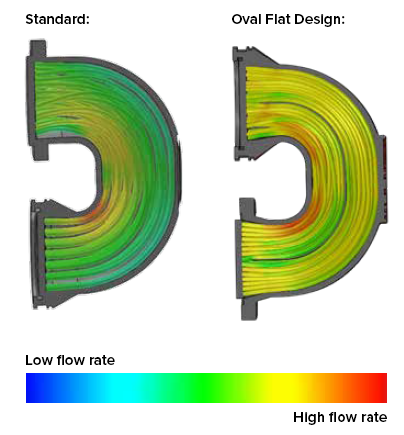
Contact-free absolute encoders
We recommend the use of suitable, contact-free and thus wear-free absolute encoders to implement a high repetition accuracy and precise nozzle direction in the case of automated firefighting systems.
It is vital to use such sensors to monitor and save movements and positions even when electricity is shut-off. In case of manual manipulation of the monitor by using the fitted hand-wheels, i.e. during maintenance or commissioning, this ensures that no reference adjustment is necessary for recalibration of the programmed automated swivelling movements.
In addition, the drives which regulate the spray pattern must be able to be fitted with absolute encoders. Besides the right / left and up /down movements, this provides a third parameter that allows influencing the shape and range of the spray target area. A larger spraying angle also reduces the extinguishing agent jet's impact forces and thus prevents a fire of bulk materials from spreading.
Wide swivelling ranges
To achieve the necessary degree of freedom, remote-controlled monitors should allow wide swivelling ranges. Preferably, the horizontal swivelling range is 360° and the vertical swivelling range reaches from +90º to -90°. Both swivelling axes should have self-locking worm gears to prevent the monitor from an unintended adjustment by an external force. Additionally self-locking gears help to stop remote-controlled monitors at the desired position without requiring additional brakes.
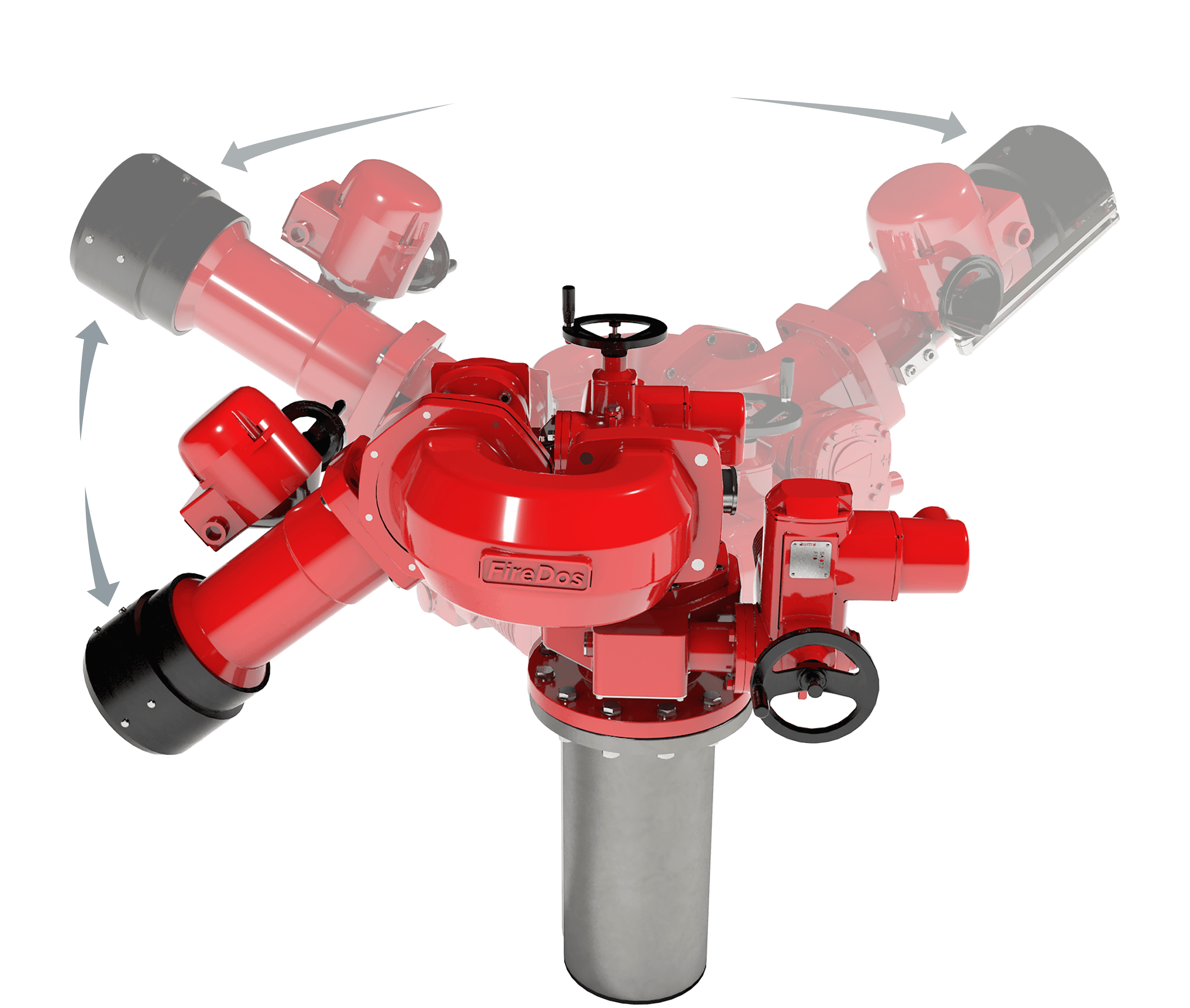
Corrosion resistance
To achieve the corrosion resistance required for a long-term use of the monitor, components made of seawater-resistant cast aluminium and additional special hard anodized coating are used and have proven themselves for many years. Using only cast parts to build monitors eliminates the risk of stress corrosion cracking, which occasionally appears in welded parts.
Flow-optimized components
The development process of monitors using cast parts increases the design flexibility and optimization process significantly. The components can be flow-optimized by the use of CFD (Computational Fluid Dynamics) simulation software. Low-pressure loss figures can be achieved even with comparatively compact dimensions. This reduction in pressure loss indicates that the extinguishing water turbulence on the way through the monitor is reduced to a minimum.
Flow-optimisation however does not end with the so-called pivot mounting, i.e. the body of the monitor, but also includes the nozzle. A sufficiently long nozzle design reduces the turbulences from the pivot mounting effectively and creates the basis for the long reach of CFD flow-optimized nozzles. As it has already been practised with manual controlled monitors for a long time even nozzles for remote-controlled monitors can optionally be fitted with regulators for the extinguishing agent flow-rate. FireDos monitors offer this option to take place remote-controlled during operation. The flow can thus be adapted to the actual requirements of firefighting.
about the author
It is successful to apply experience and procedures from practical firefighting to automated firefighting systems, the seeming paradox of 'less extinguishing agent leads to a higher level of fire protection' can become reality.
Fritz Zimmermann, head of the engineering department at FireDos

Control systems for automated fixed firefighting systems with monitors
The range of electric control systems for remote-controlled monitors reaches from standalone control systems to control one single monitor to complex systems with multiple monitors where decentral individual controls are connected with a central control unit via a fibre optic network. Dependant on the requirement, compact PLC systems or systems consisting of several interconnected assemblies make up the control system. Where high functional safety is required, redundant CPUs can be installed or, alternatively, PLC control systems in accordance with the required safety level (SIL).
Automatic self-test increases system availability
A daily automatic self-test is one standard feature of today's control systems. During this process, the functionality of all drives and sensors fitted on the remote-controlled monitors is tested. If a fault is found at one of the components, a corresponding error message is sent to the supervising body. This ensures that possibly occurring failures are reported immediately and can be eliminated before a malfunction during operation happens. This significantly increases the reliability and availability of the automated firefighting system, compared with such systems which are tested for functionality in more or less long and possibly irregular intervals.
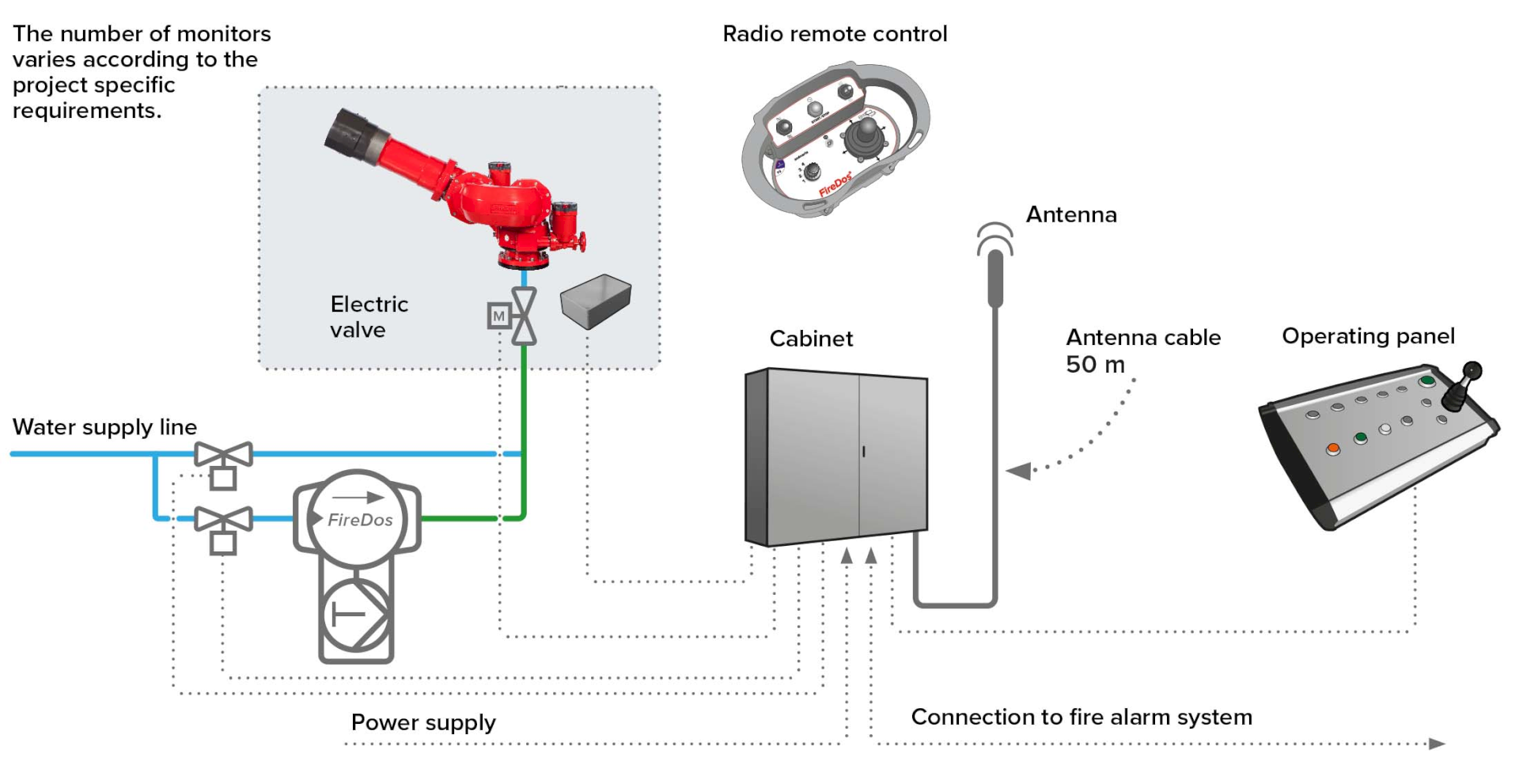
Control systems with an HMI option facilitate commissioning
For easier commissioning, the automated control systems are fitted with an HMI (Human-Machine Interface) option. Thereby, during commissioning or a change in program, all threshold values which must not be exceeded by the remote-controlled monitors can be adjusted in the control cabinet without having to make any settings directly at the remote-controlled monitors. In the case of very large systems, this is an invaluable gain of time during commissioning, service and use.
Oscillation modes
But not only thresholds and rest positions can be programmed via a display. Also the best oscillation mode for the respective system can be individually selected and programmed for the single or multiple monitors. Currently, four different oscillating modes are generally used which allow adapting to the various requirements in different applications. This allows the hazardous areas within these applications to be separated into individual zones where one or even several monitors will apply their extinguishing agent in case of an alarm. The following four oscillating modes are normally used:
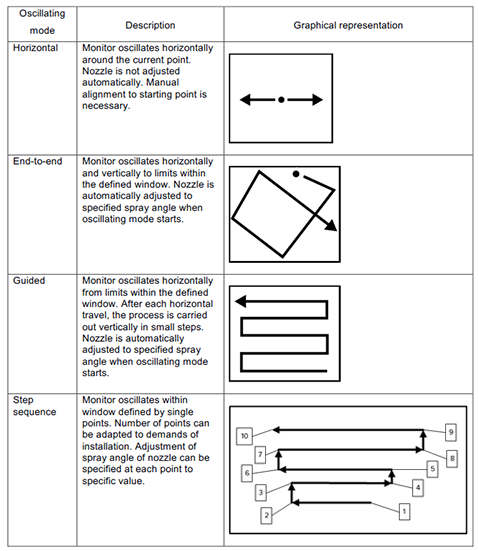
Interconnection with fire detection systems
If control systems for remote-controlled monitors are interconnected with fire detection systems (i.e. on the basis of IR cameras), pre-selection of individual zones can be skipped. The monitor will then swivel to an area identified by the fire detection system and will start the extinguishing operation directly at the source of the fire. In case of locally confined initial fires, this results in maximum firefighting success while consuming just a minimum amount of extinguishing agent and affecting only a limited area.
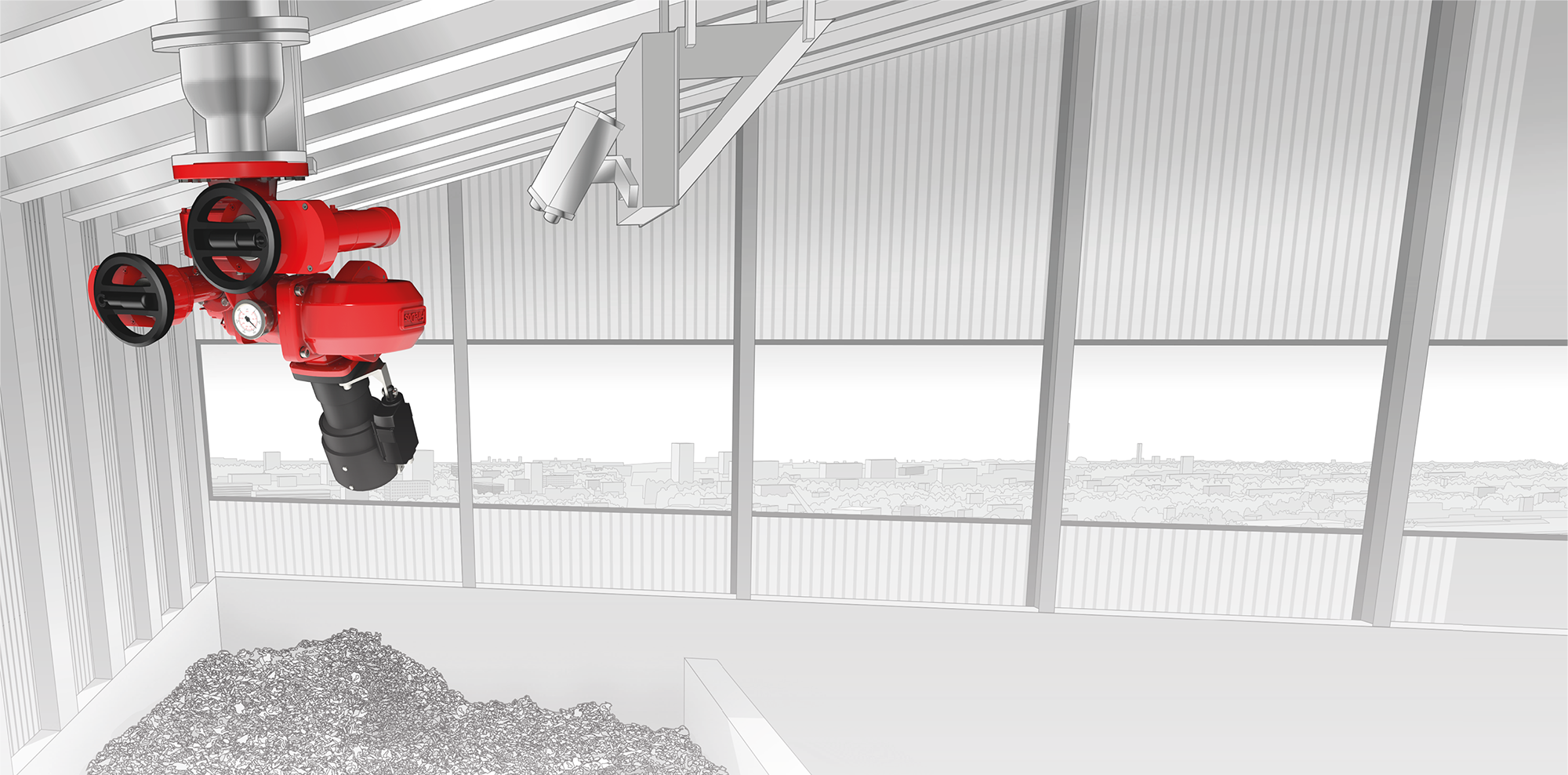
Monitor in a waste incineration, interconnected with an IR system for fire protection.
Outlook and conclusion
The technical development in the field of drive engineering, sensor technology and control technology offers some great future potential to detect fires in their initial phase as well as to fight fires in a localized and resource-conserving manner by use of monitors. In addition, a focus must be placed on what firefighters around the world use to fight fires. In live operations, the extinguishing agent flow is adapted to the requirements set by the fire incident. The availability of remote-controlled monitors and nozzles where the extinguishing agent flow rate can be adjusted by remote-control without interruption of the operation makes it possible to apply this procedure also to automated firefighting systems. If it is therefore successful to apply experience and procedures from practical firefighting to automated firefighting systems, the seeming paradox of "less extinguishing agent leads to a higher level of fire protection" can become reality.
- PLC = Programmable Logic Controller
- CFD = Computational Fluid Dynamics
- CPU = Central Processing Unit
- SIL = Safety Integrity Level
- HMI = Human-Machine Interface
- IR = Infrared
this might also be of interest for you:
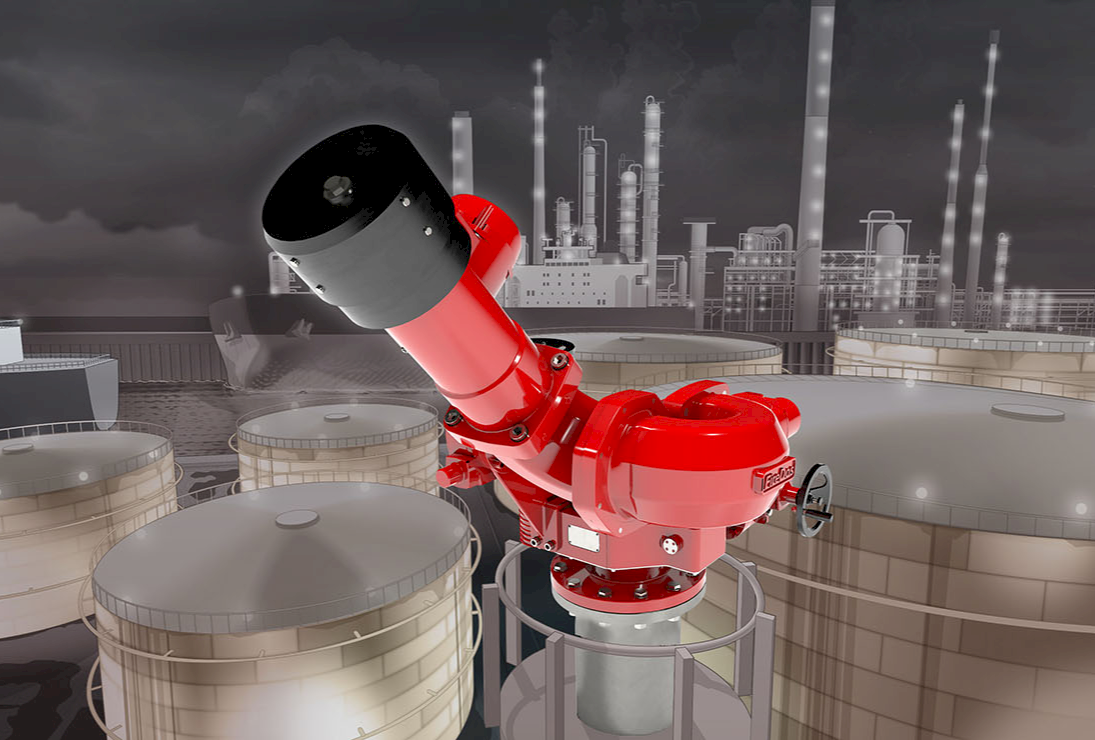
Monitors: Powerful and flexible
Thousands of liters of water per minute, reaching more than 150 meters
View more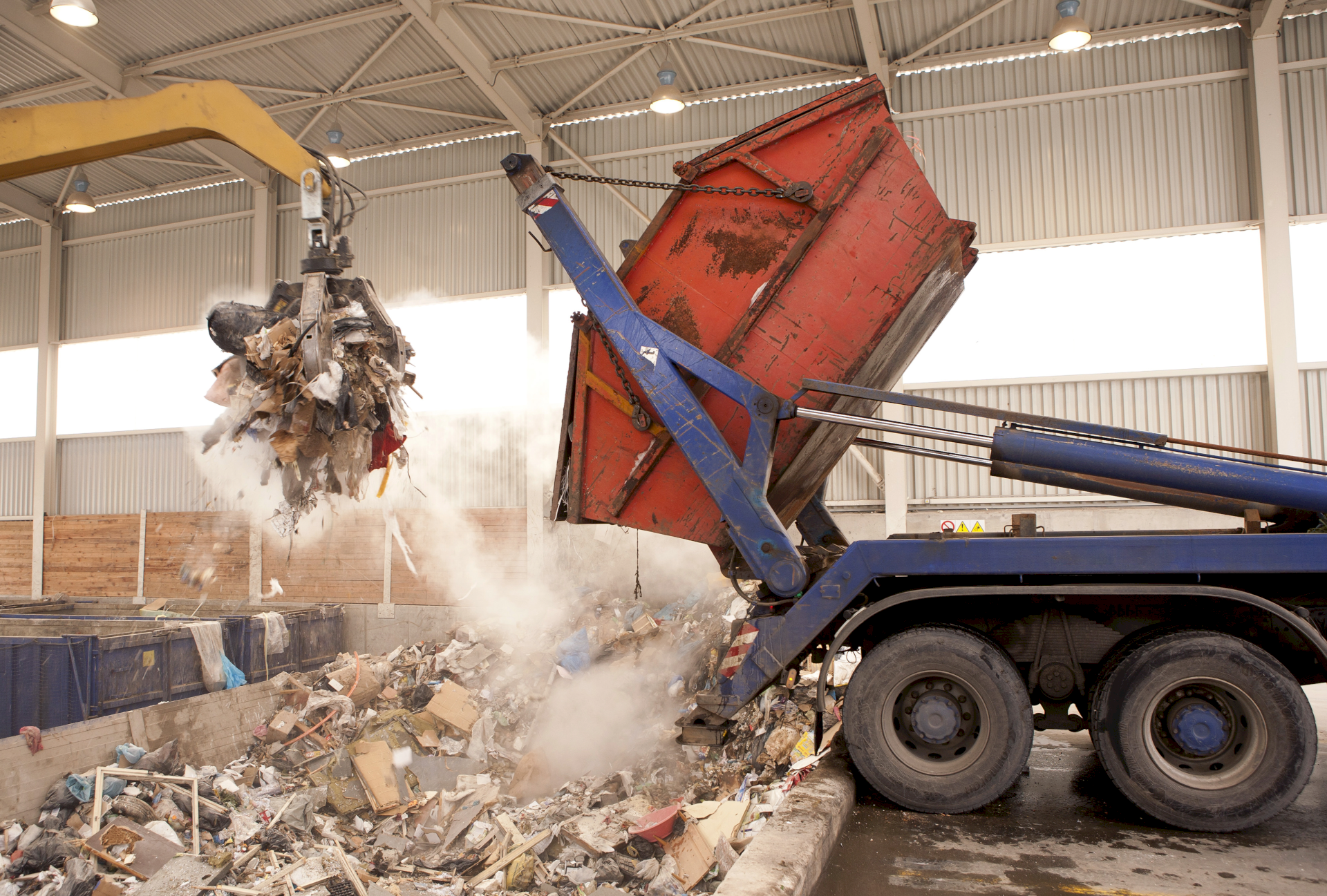
our solutions for incineration plants
Early fire discovery and pinpoint attack
View more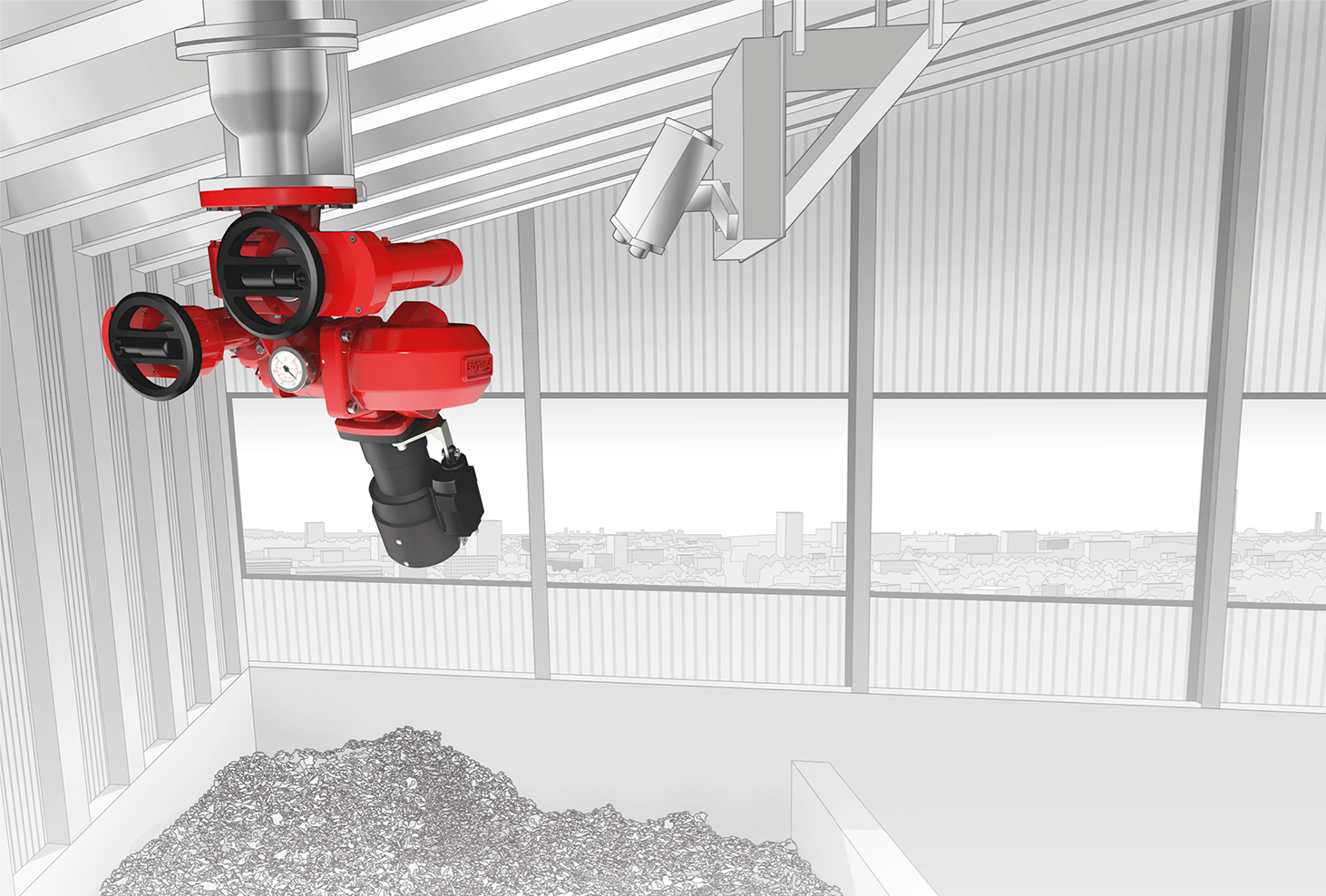
Automatic extinguishing with heat detection
Remote-controlled monitors are a key element of such systems.
View more